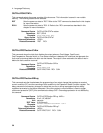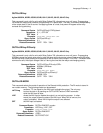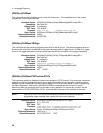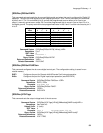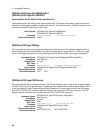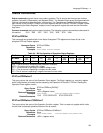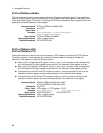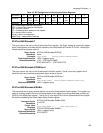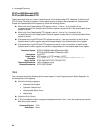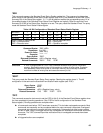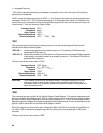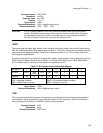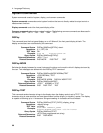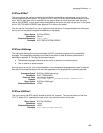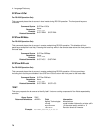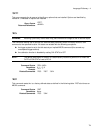4 - Language Dictionary
64
STATus:QUEStionable:NTR
STATus:QUEStionable:PTR
These commands allow you to set or read the value of the Questionable NTR (Negative-Transition) and
PTR (Positive-Transistion) registers. These registers serve as polarity filters between the Questionable
Enable and Questionable Event registers to cause the following actions:
u When a bit of the Questionable NTR register is set to 1, then a 1-to-0 transition of the
corresponding bit of the Questionable Condition register causes that bit in the Questionable Event
register to be set.
u When a bit of the Questionable PTR register is set to 1, then a 0-to-1 transition of the
corresponding bit in the Questionable Condition register causes that bit in the Questionable Event
register to be set.
u If the same bits in both NTR and PTR registers are set to 1, then any transition of that bit at the
Questionable Condition register sets the corresponding bit in the Questionable Event register.
u If the same bits in both NTR and PTR registers are set to 0, then no transition of that bit at the
Questionable Condition register can set the corresponding bit in the Questionable Event register.
Command Syntax
STATus:QUEStionable:NTRansition<NRf>
STATus:QUEStionable:PTRansition<NRf>
Parameters
0 to 32727
Preset Value
NTR register = 0; PTR register = 32727
Examples
STAT:QUES:NTR 16 STATUS:QUESTIONABLE:PTR 512
Query Syntax
STAT:QUES:NTR?STAT:QUES:PTR?
Returned Parameters
<NR1>(Register value)
Related Commands
STAT:QUES:ENAB
*CLS
This command causes the following actions (see chapter 3 under Programming the Status Registers, for
the descriptions of all registers):
u Clears the following registers:
•
Standard Event Status
•
Operation Status Event
•
Questionable Status Event
•
Status Byte
u Clears the Error Queue
u If *CLS immediately follows a program message terminator (<NL>), then the output queue and the
MAV bit are also cleared.
Command Syntax
*CLS
Parameters
None



